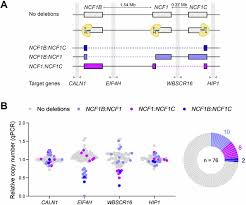In 2024, scientists made a groundbreaking discovery regarding the use of CRISPR gene-editing technology. A study revealed that the commonly used CRISPR-Cas9 system could inadvertently introduce unexpected genetic defects in the process of editing targeted genes. This finding sheds light on the potential risks associated with this revolutionary gene-editing tool and emphasizes the need for caution and further research in its application.
CRISPR-Cas9 technology has gained widespread attention in recent years for its ability to precisely edit genetic material, offering promising solutions for treating genetic disorders, enhancing crop yields, and even eradicating diseases. However, the new study published in the journal Nature Genetics highlights a potential downside to the technology.
The study, led by a team of researchers from leading universities and research institutions, found that the CRISPR-Cas9 system can inadvertently create unintended genetic mutations in the process of targeting and editing specific genes. These off-target effects could potentially lead to harmful consequences, such as the development of new genetic disorders or the disruption of essential cellular functions.
To investigate the impact of CRISPR-Cas9 on the genome, the researchers conducted a series of experiments using both human cells and laboratory model organisms. They discovered that the gene-editing tool could introduce genetic mutations at sites other than the intended target, raising concerns about the precision and accuracy of the technology.
The study’s findings underscore the importance of thorough monitoring and evaluation when utilizing CRISPR-Cas9 for research and therapeutic purposes. Researchers and clinicians must exercise caution and implement strategies to minimize the risk of off-target effects, such as refining the design of CRISPR guide RNAs and employing advanced sequencing technologies to detect unintended mutations.
Despite the potential challenges associated with CRISPR-Cas9, the technology continues to hold immense promise for advancing scientific research and addressing critical health and agricultural issues. By gaining a deeper understanding of its mechanisms and limitations, scientists can harness the power of CRISPR gene editing more effectively and responsibly.
As the field of genetic engineering continues to evolve, it is essential for researchers to stay vigilant and proactive in identifying and mitigating potential risks associated with gene-editing technologies. By balancing innovation with caution, we can unlock the full potential of CRISPR-Cas9 while safeguarding the integrity of the genetic material and minimizing unintended consequences.

